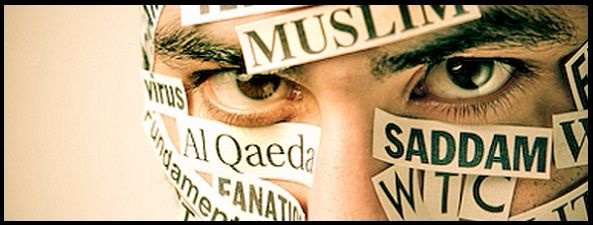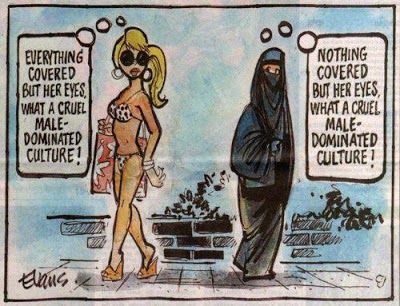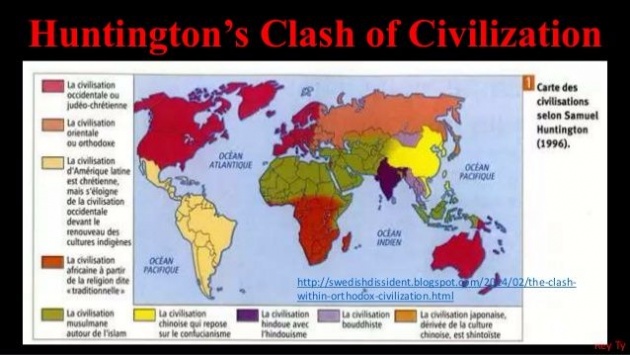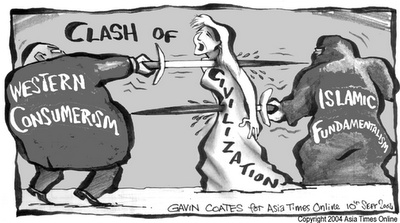A NEW CLASH OF CIVILIZATION: USA, RUSSIA AND MIDDLE EAST.

After the Cold War Era which ended with the fall of USSR in the late eighties of the previous century, many theories regarding the new world order came to the fore. However, Samuel P. Huntington’s hypothesis in his work, ‘The Clash of Civilisations and Remaking of World Order’, has come to be the most widely accepted of these theories at present. In his book, he identifies eight civilisations, including the Muslim World. He believes that the highest cultural groupings of peoples are differentiated from each other by religion and the primary axis of conflict in the post cold war era would be along cultural and religious lines. He further stipulates that the fault lines between civilisations will be the battle lines of the future thus the clash of civilisations will dominate world politics.

There appears to be a common belief in all the great religions that the world is nearing the end of times, this century has thus become a century of religious polarisation. The Zionists are actively engaged in their efforts to make a world order in line what they believe is mentioned in their religious scriptures in the shape of prophesies. The Christians, who share the Old Testament with the Jews, are also helping them in their efforts to actualise these prophesies. In today’s world, even the Christians, who had been known for their religious tolerance following the Reformation, are gradually tending towards intolerance. Similarly, the Muslims, already split into different sects in the middle ages due to various power struggles, are being polarised into extreme sectarian groups. Our Planet is thus disturbingly sliding into a ‘middle ages mindset’ once again. A mindset marked by religious intolerance, racial discrimination and ethnicity.

Muslims, unfortunately, are the worst affected, due to the fact that they take their religion very seriously. The political manifestation of the divide among Muslims is visible in the shape of polarisation of the two sects of Muslims around their centers of gravity, namely: Saudi Arabia and Iran. The former propagating the Wahabi-Sunni, and the latter, the Shiite sects of Islam. Although both sects share the fundamental injunctions of Islam, and their differences are placed in the events which occurred after the demise of Prophet Mohammad (SAW). These differences, however, have been ingrained in the minds of adherents for centuries and cannot disappear. The situation has been further worsened by the iniquitous exploitation of the complexities of the Muslim sectarianism by the great powers for the fulfillment of their own political and economic agendas in the region. The ‘great game’ being played by the great powers of the world in the Greater Middle Eastern region has resulted in several proxy wars; Iraq, Syria, Pakistan and Afghanistan, being their battle grounds. The Muslims, as a result, are becoming increasingly polarised on sectarian lines. The religio-political movements such as Al Qaida, Taliban and now ISIS are the direct result of this on-going polarisation. Thus the Muslim World is experiencing a ‘clash within the civilisation’ prior to the Huntington’s actual ‘Clash of Civilisations’.

The effects of this sectarian polarisation in the Muslim World are, alarmingly, trickling down into Muslim societies. Its manifestations are visible in almost all Muslim countries, with the countries of the Greater Middle East being the worst affected amongst them. Muslim societies within Islamic countries are thus becoming more and more bigoted and intolerant of sects other than their own. In today’s world, Muslims who had peacefully coexisted with each other in the past are becoming increasingly prejudiced and intolerant towards each other. The media’s constant screening of brutal sectarian killings in Syria, Iraq, Afghanistan and Pakistan by Taliban and ISIS act as a further catalyst for this phenomenon. The rift between these two sects is increasing dangerously, and making the Muslim Ummah weak and vulnerable in the best interest of the great powers who end up being the greatest beneficiaries due to their ‘divide and rule’ policy.

The US invasion and the installation of a puppet regime in Iraq, US support for rebels to overthrow Qaddafi in Libya, her interest in the Levant, can be better understood in the backdrop of the existence of great oil and gas reservoirs in the region. Additionally, Syria has been reluctant to succumb to Israel’s policies while other countries in the region, Egypt and Jordan, have made no-war pacts with Israel. Similarly, the rocky desert of Pakistan’s North Waziristan is also reported to have great reservoirs of oil, gold, uranium and other precious elements. Both these regions are Muslim inhabited areas and have been made politically unstable by the depraved covert support of Muslim sectarian extremists by the great powers. Russian support of the Syrian regime to deny Levant oil resources to the US and its proximity to Russia and also in order to keep her Black Sea route secure, has obligated her to send a strong army of hundred and fifty thousand men to fight against ISIS. Additionally, Russia has also threatened to bomb Saudi Arabia for their alleged support of ISIS.
The US’ recent lifting of decades old sanctions against Iran can be viewed as a shift of policy away from its old strong ally, Saudi Arabia, thus strengthening the Shiite pole against Saudi Arabia. The proxy wars fought in Yemen and Syria between Saudi led Arab alliance and Iran are dangerously pushing the Muslim world towards a clash within Muslim Civilisation. Other Muslim countries cannot remain aloof as they are inhabited by Sunni as well as Shiite populations and their respective government’s policies with regard to these proxy wars are keenly observed by adherents of both mindsets.
Pakistan, being the leading Muslim country is, unfortunately, paying a heavy cost in this regard. It has been bleeding from terrorist’s attacks for more than two decades. Demographically, Pakistan has about a 20% Shiite population and has almost the same representation in the Military. Pakistan’s strong professional Military, armed with nuclear weapons with excellent delivery systems and latest indigenously produced military hardware has ranked it as the top Muslim country. The present regional scenario, as mentioned above, has placed Pakistan in a serious dilemma. On the one hand, it has had a long association with Saudi Arabia, and it fairly regularly has benefitted from its financial largesse. On the other hand, however, besides sharing a 900 km border with Iran, Pakistan also shares centuries old cultural and social ties with Iran. While Pakistan’s Kashmir and North Western borders are already hostile with India and Afghanistan respectively, it can’t afford to also have bad relations with Iran by siding with Saudi Arabia. Pakistan’s policy of not sending its troops to Saudi Arabia for Yemen and playing a neutral role is therefore highly commendable.
The Muslim Ummah has to be aware of the fact that the demon of sectarianism in the Muslim World is increasing dangerously, and needs to be checked on all cost. This is a great impending threat for the Muslim World. The various Muslim power elites need to set aside their prejudices and differences and work for the unification of the Muslim Ummah by fighting terrorism together and not get involved in proxy wars against each other. Pakistan’s reconciliatory role being played by the PM is highly appreciable but has little chances for success due to the highly placed vested interests and rigidity of both parties. If better sense does not prevail, the Muslim Ummah is undoubtedly heading towards adversity, the clash within the Muslim Civilisation is eminent and the greatest beneficiaries would be the enemies of Islam.



